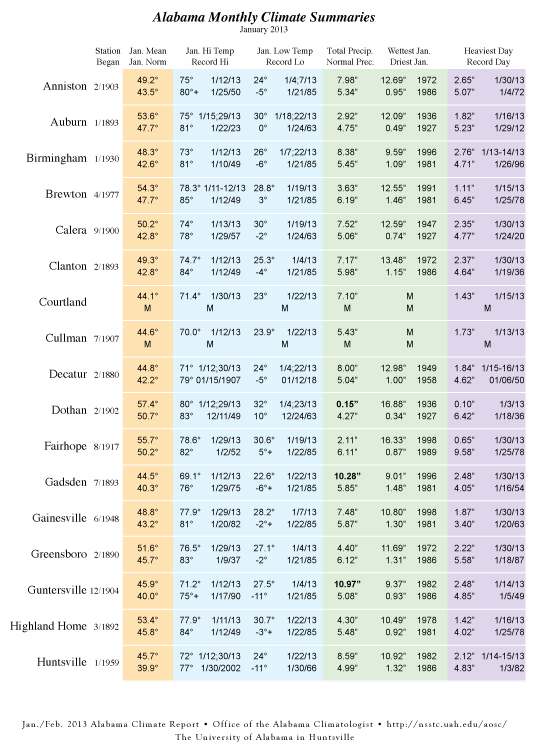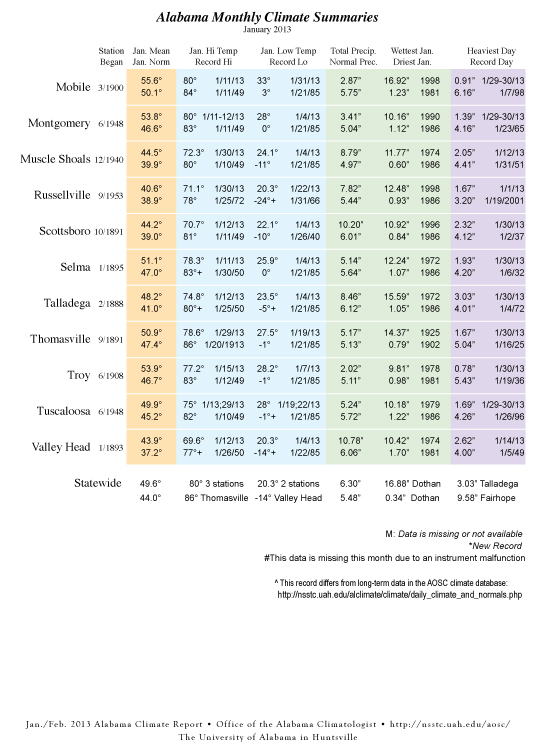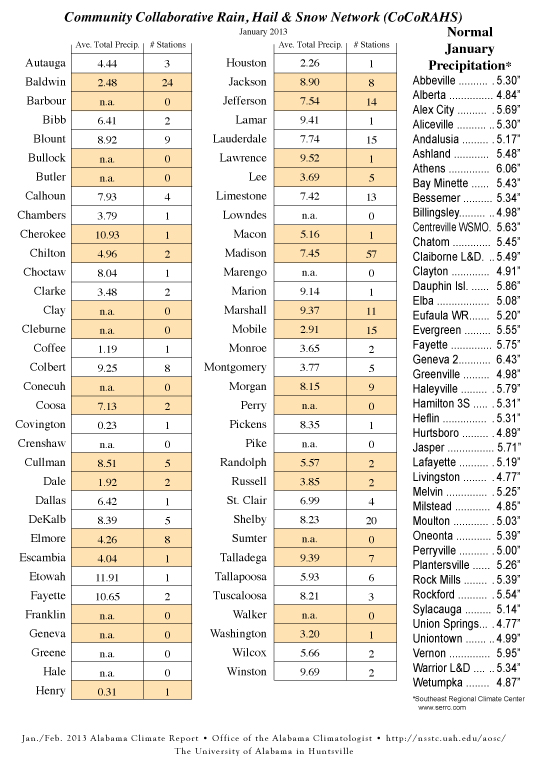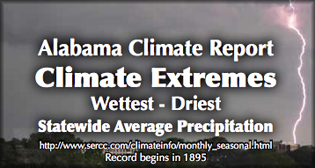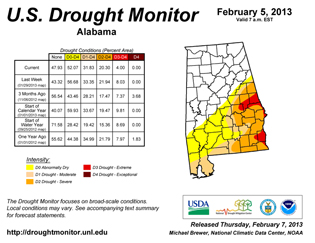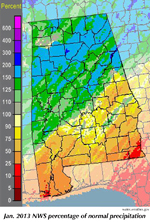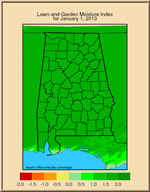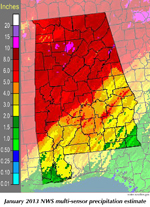Volume 4, Number 14, January 2013
Please pardon the cliché, but January in Alabama was the wettest of months and it was the driest of months, all depending on where you happened to be.
How wet? Guntersville (10.97") and Gadsden (10.28") recorded their wettest Januaries on record. Gadsden's weather record started in 1893, so Gadsden had its wettest January in 119 years. By comparison, Guntersville's weather record goes back only to 1904.
CoCoRAHS volunteers in 17 northerly counties reported total rainfall of more than ten inches in January, with Hanceville's 12.60" likely the heaviest rainfall reported for the month. Anderson and Lake Purdy also had more than 12 inches of rain for the month.
How dry? Dothan had its driest January (0.15") since they started keeping records there in 1902. In fairness, it should be noted that among the 26 cities in our statewide sample, Dothan usually has the driest Januaries. In an average January, Dothan gets only 4.27 inches of rain.
Regularly reporting CoCoRAHS volunteers in Enterprise, Ozark and Foley all reported total rainfall for January of less than two inches. The NWS station in Troy recorded only 2.02 inches, while Fairhope got 2.11 inches.
This pattern shows up on Alabama's Drought Monitor, with the generally southeastern half of the state being in some stage of drought. This should be a familiar pattern by now. It is roughly similar to the winter rainfall pattern we saw in both 2009-10 and 2010-11.
It might be due at least in part to currents and such in the Pacific Ocean running west from South America along the equator. A pattern similar to a weak La Niña Pacific Ocean cooling event is in place there. During a La Niña, cooler than normal water rises to the surface of the equatorial Pacific. That can change weather patterns as far north as ... states that border the Gulf of Mexico.
These Pacific oscillations, both warm and cool, can influence weather about halfway around the globe. And the past two winters were both La Niña winters, which often steer heavy rains to the Ohio Valley. The southern extensions of those systems frequently reach down only into north Alabama, keeping south Alabama drier than usual.
- John Christy


